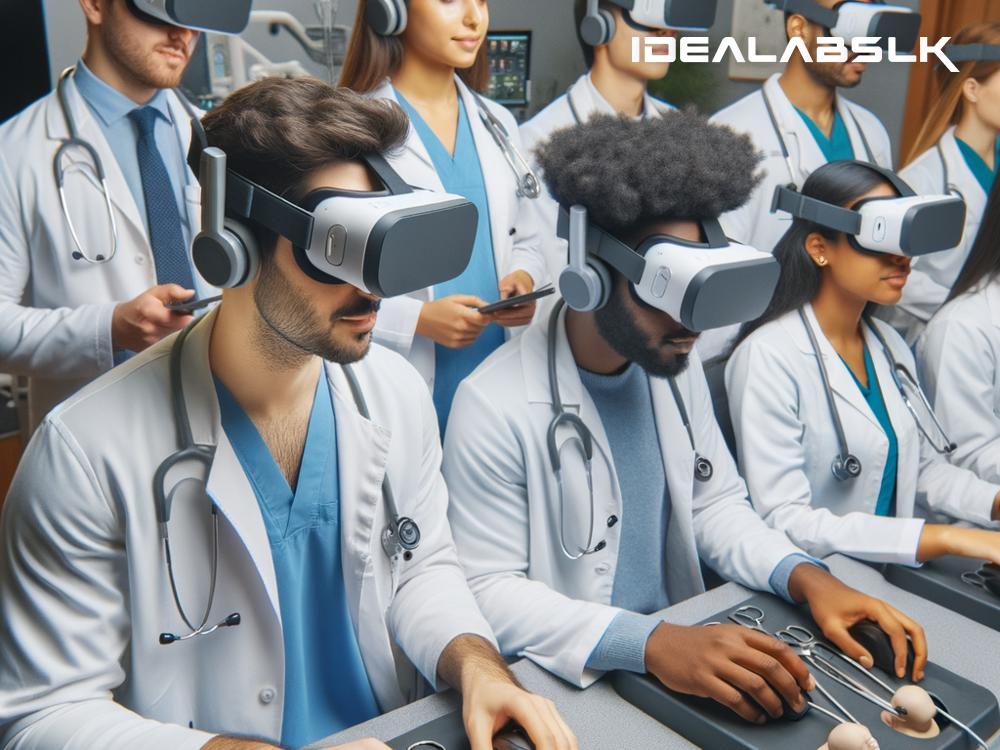Imagine you had a magical pair of glasses that could transport you into a world where you can learn how to save lives, perform complex surgeries, or understand the human body in ways never thought possible. This isn't the plot of a sci-fi movie; this is the reality of today's medical training and education, thanks to Virtual Reality (VR).
Virtual Reality technology has started a revolution in how future doctors, nurses, and healthcare professionals are trained, making learning more immersive, effective, and fun. Let’s dive into how VR is transforming the landscape of medical education.
Step into Another World: The Power of VR in Learning
Virtual Reality works by creating a digital environment that simulates the real world. When wearing a VR headset, students can step into a 3D world where they can interact with objects and scenarios as if they were actually there. It's like practicing a surgery or examining a patient in a risk-free setting. You can make mistakes and learn from them without any real-world consequences.
Mastering Complex Procedures with Confidence
One of the most significant advantages of VR in medical training is the hands-on experience it offers. Traditionally, learning complex surgical procedures was possible only through textbooks, videos, and, if you’re lucky, observing them in person. But with VR, students can practice these procedures as many times as they need to master them.
Imagine being able to perform heart surgery in a controlled environment where you can pause, rewind, or repeat a step. VR makes this possible. This repetitive practice builds muscle memory and confidence, ensuring that when a student performs a real surgery, it’s not their first time.
A Tailored Educational Experience
Each student learns differently and at their own pace. VR applications can adapt to individual learning styles, offering a custom-tailored educational experience. For instance, a student struggling with understanding a particular concept can spend more time in a VR module designed to address that topic, while others can move ahead.
Moreover, VR scenarios can be modified to increase difficulty as students' skills advance, providing a continuous challenge and encouraging growth. This level of personalization is hard to achieve in a traditional classroom or even in clinical settings.
Beyond Borders: Global Medical Education
Imagine learning about tropical diseases not just from textbooks but by immersing yourself in a virtual environment that simulates the conditions and challenges of diagnosing and treating these diseases in real life. VR makes this possible, enabling students to gain experience with a wide range of conditions, even those they’re unlikely to encounter in their geographical location.
This global perspective prepares students to work in various settings and with diverse patient populations, making them more versatile and competent healthcare providers.
Reducing Costs and Resources
Medical training requires a lot of resources, from cadavers for anatomy classes to high-tech simulators for surgical practice. These materials are expensive and not easily accessible to every institution. VR stands out by offering a cost-effective alternative. Once developed, a VR module can be used repeatedly without incurring additional costs.
This technology reduces the need for physical resources, lowers training costs, and makes high-quality medical education more accessible to institutions worldwide, potentially reducing disparities in healthcare quality.
Empathy and Communication Training
Beyond technical skills, VR also offers scenarios that focus on developing empathy and communication skills. Through immersive role-play, students can experience situations from a patient's perspective, understanding their fears, concerns, and how medical decisions affect their lives.
This type of training is invaluable in nurturing compassionate healthcare professionals who can communicate effectively with patients, improving patient satisfaction and outcomes.
Future Prospects: Limitless Possibilities
The potential of VR in medical training is far from fully explored. As technology advances, we can anticipate more realistic simulations, incorporating haptic feedback that allows students to "feel" the procedures, and even AI-driven personalized learning experiences.
The integration of VR in medical education signifies a paradigm shift towards more interactive, impactful, and empathetic training of healthcare professionals. Its ability to bridge the gap between theoretical knowledge and practical skills, democratize education, and foster empathy sets a new standard in medical training.
In conclusion, the impact of Virtual Reality on medical training and education is profound and far-reaching. It not only transforms how future healthcare professionals are trained but also promises to improve healthcare outcomes for patients worldwide. With VR, the future of medical education is here, and it is nothing short of revolutionary.

